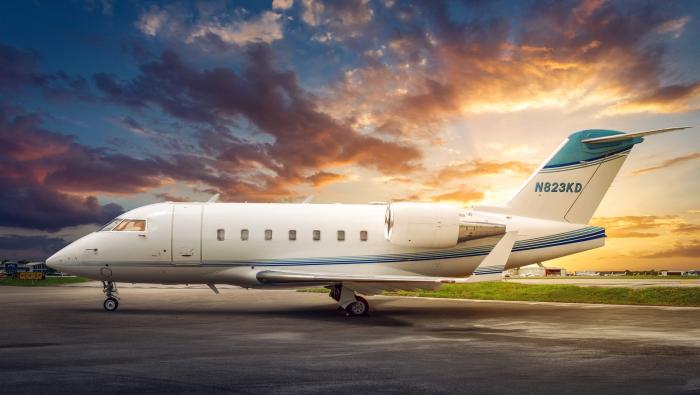Just as the cold weather starts to take hold in the higher reaches of North America, Sikorsky’s S-92 has passed one of its critical remaining airworthiness tests: crews with Cougar Helicopters in Canada are now cleared to fly their aircraft into known-icing conditions. Transport Canada certification for the helicopter equipped with a new rotor ice protection system (RIPS) came on October 31, hard on the heels of FAA certification earlier that month. The EASA completed its evaluation at around the same time, and its clearance is expected shortly.
According to Sikorsky vice president of commercial programs Mick Maurer, “Cougar was one of our first S-92 customers and a key participant in the certification effort. Its operations off Newfoundland are influenced for much of the year by severe icing and it has special expertise in these types of operation–so much so that the FAA sought its knowledge and experience in advance of the S-92 flight tests.”
Their work looks as if it paid off. The S-92 is now certified to the latest and most stringent of all-weather flight safety standards, as demanded by the certification authorities in the U.S. and Canada. After spending two winters chasing the ice around Quebec, northern Michigan and the like, the company earned the clearance just as freezing conditions are making themselves felt once again.
Development of the medium twin’s icing capabilities began as long ago as 1997 and amounted to three years of aircraft testing. These began with accretion tests in the McKinley climatic hangar at Eglin AFB in Florida and continued with dry air tests of simulated ice on the tail surfaces through 2003. Last year Sikorsky conducted flight tests behind a helicopter with special equipment to create an artificial cloud of ice.
Cold-weather Testing
Headquarters for these latest trials were at Fairbanks, Alaska, where program manager Bryan Young led a team of pilots and engineers as they put the S-92 through its cold-weather paces. He explained the mechanics of it to AIN. “Essentially, de-icing is fitted to the main and tail rotor blades, while anti-icing protects the engine inlets. The engine system uses a combination of electric heating elements in the intake lips and engine bleed air to the first compressor stage.
“Each rotor blade has electric heater mats embedded in four zones along its length–on each leading edge and upper surface, plus two on the lower surfaces. These are switched on in succession, to avoid drawing undue electrical load, and in sequence to minimize the risk of asymmetric shedding.
“It’s fair to say that the principle is familiar to most pilots of transport helicopters: the difference here is that it’s controlled automatically. Normal aircraft temperature sensors, together with Penny & Giles ice-rate meters at the engine intakes, dictate the temperature of the mats and the time interval between ‘firing’ each one up; they are not left constantly heating. The system allows a certain amount of ice to build up before shedding (once the temperature approaches zero, the centrifugal forces usually do the rest) but the heavier the icing, the more frequently it ‘fires.’
“The tail rotor de-icing uses the same principle but different parameters. Here, all four blades heat up at the same time and on a faster cycle (about three times that of the main blades). The coldest we flew was about minus 24 degrees C [-11 degrees F] but of course the worst conditions are found at around freezing point. The helicopter behaved itself well throughout.”
There is often a risk of ice accumulating on a helicopter’s vertical fin and/or horizontal tail stabilizer, so the team needed to discover if it would be an issue on the S-92. Young said, “In the summer we experimented by gluing lumps of hard Styrofoam to the leading edges, thus simulating a range of icing conditions–from a trace to heavy– on both components. The aircraft behaved well throughout the flight envelope.
“The system is reliable. It meets the FAA’s latest requirements for redundancy and safety; there are multiple fail-safe paths. We flew the helicopter regularly in icing conditions with the system switched off, on occasion for at least twice the amount of time required by the UK CAA (30 minutes compared with that agency’s required 15), to show it can still fly safely if the system fails. Doing that isn’t particularly risky: helicopters tend to shed blade ice as they fly and it’s not a question of affecting aerodynamics to the extent that it might stall–as you risk in an airplane. It is more a matter of the comfort level. If you can’t shed it, the ride gets very uncomfortable.”
The only remaining restrictions affecting the helicopter are the standard 10,000-foot altitude limitation and refraining from flying in freezing rain and drizzle. Systems were being activated at press time, while Cougar flew for the first time in known icing on November 7. The hardware is built in during construction, but the software needs to be installed. Sikorsky teams are currently visiting customers to activate the system for operation.
The 28 new H-92 maritime helicopters for the Canadian Forces, designated the CH-148 Cyclone, are naval variants of the S-92 and will possess the same icing clearance. The OEM also plans to incorporate similar icing protection on the new S-76D, which is scheduled to enter service in 2008.
Most of the S-92s ordered or delivered to date incorporate RIPS and eventually, Young predicted, about 75 percent of the whole fleet will have it. “The system not only protects the aircraft but protects it in a way that allows it to fly profitably–to carry its passengers in the widest possible range of weather conditions.”







